Philips Fidelio X1 Review
Philips Fidelio X1
Philips' new high-end headphones are comfortable and sound impressive.
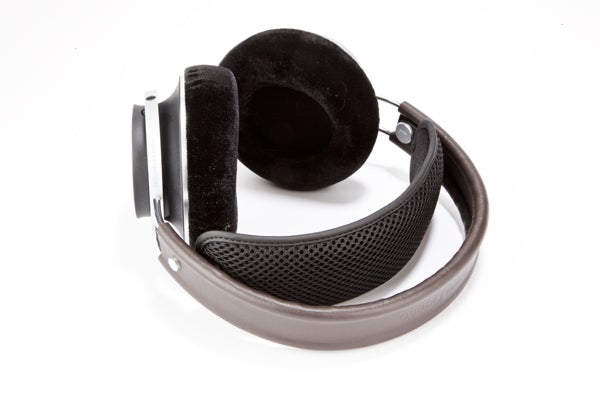
Verdict
Pros
- Good-looking design
- Removable cable
- Extremely comfortable
- Open, articulate sound
- Tight, well-defined bass
Cons
- Leaky by design
- Verging on too much low-end
Key Specifications
- Review Price: £269.99
- Real leather headband
- 50mm Neodymium drivers
Introduction
The Philips Fidelio X1 headphones are the big daddy pair of the new Fidelio range. It’s perhaps Philips’s most concerted effort at a range of serious high-end headphones, ever. Unlike the Philips Fidelio L1 and the Philips Fidelio M1, these are open-back headphones intended for at-home use rather than to supply tunes on the way to work.
Sets like this tend to provide the best sound quality of all headphones. The Philips Fidelio X1 have a lot to prove. Thankfully, they show that Philips really knows what it’s doing.
Philips Fidelio X1 Design and Comfort
The new Fidelio range of headphones from Philips is partly design-led. Philips is keen to big-up that they are headphones that are meant to both sound and look good.
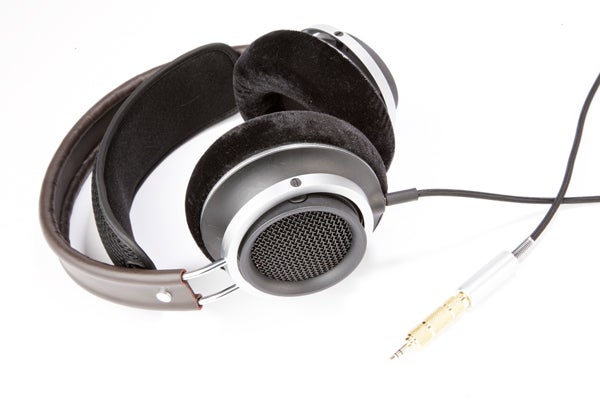
Open-back headphones rarely pay all that much attention to style, as they are only particularly useful in quiet, private places. Headphones like the Philips Fidelio X1 are not for showing off on the local high street. A focus on design approach pays off, though. We think these cans are significantly better looking than the vast majority of their big-name rivals.
The Philips Fidelio X1 headphones make the Sennheiser HD 650 and Shure SRH1440 appear style-less and drab, and it’s an impression that persists once you get hold of the things. Sub-£300 “serious” headphones often use plastic frames, but the Philips Fidelio X1 feel sturdier and more high-end as they make sure most of the bits your hands come into contact with are made of high-end feeling materials.
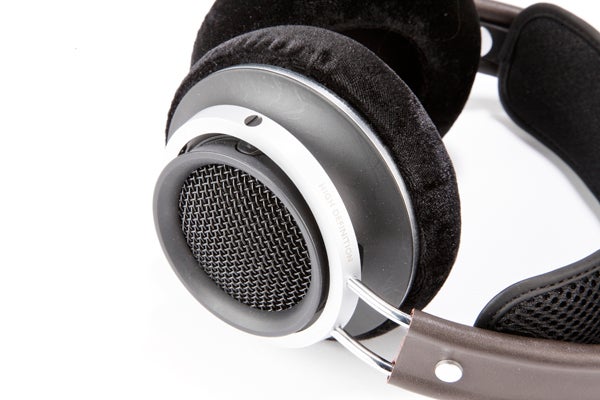
The thick circles of aluminium that orbit each earcup show off the cool, hard-edged touch that only metal can usually provide, and 90 percent of the outer headband is tightly coated in real leather. This should wear better than scratch-happy chromed metal, but we’re convinced a big part of its use is to give the Philips Fidelio X1 the look and feel of a compromise-free headphone. And, hey, it works. Even the plastic outer frames of the earcups are textured to make them feel more like ceramic than plastic.
Practically-speaking, what’s more important is the quality of the earcup padding and the inner headband – the bit that rests on your head. These are largely what dictates whether a pair of headphones is comfortable or an exercise in accepting agony.
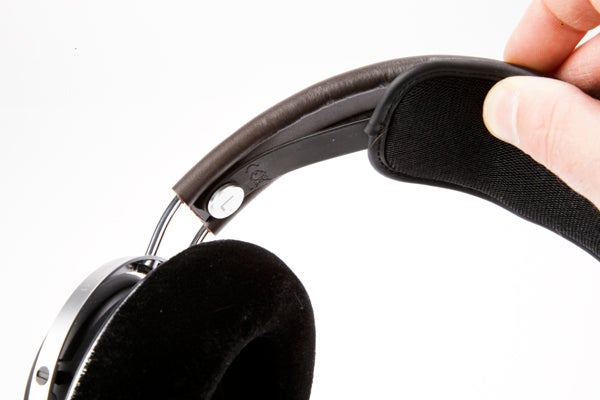
Again, the Philips Fidelio X1 pass with distinction. The inner headband is less showy than the outer part, made out of a foam-lined pad of mesh fabric that distributes the weight of the headphones across your head with aplomb. It automatically alters its position to suit the shape of your head, further helping it spread the weight across your pate.
The Philips Fidelio X1 ear pads are great, too. Thick, large and covered with fine black velour, they both look the part and cushion the inward pressure of the headband perfectly. These headphones don’t have the lightest touch of all open pairs, but they hug your head rather than clamping it. They’re wonderfully comfortable.

As much as we can recommend these headphones for all-day listening sessions, don’t even think about taking them outside – well, further than the back garden. The Philips Fidelio X1 are fairly leaky thanks to the black metal mesh that covers the back of each earcup. They do not isolate you from the outside world much at all, and anyone nearby will instantly know your secret obsession with boy bands of the early 90s, as your tunes will leak out freely.
Philips Fidelio X1 Accessories and Cable
As is common in a reasonably high-end set of headphones like this, the Philips Fidelio X1 do not come with a great wealth of accessories. We guess the idea is that you probably won’t need them, as they’ll spend most of their life in your lounge, bedroom or study.
There’s no carry case, but you do get a chunky 6.3mm-to-3.5mm jack converter. Like most serious headphones, the standard cable ends in a full-size 6.3mm plug. It’s robustly armoured with a thick tube of anodised metal. The cable itself is solid too.
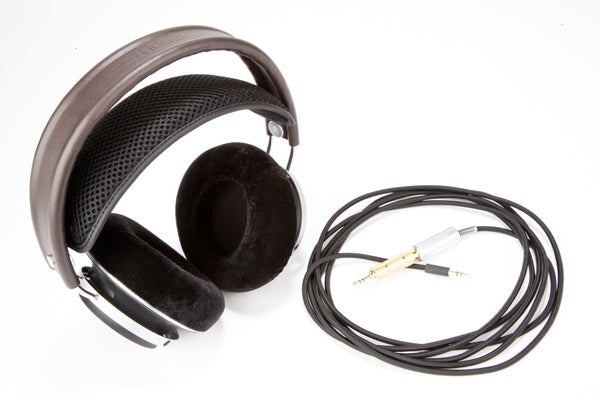
It’s fabric-braided, 3m long and plugs into the left earcup with an entirely standard non-locking 3.5mm jack. Replacing the cable of the Philips Fidelio X1 is a cinch. Using a fabric cable here feels like a decision based on style rather than function, but there are no particular downsides to its use, and it should help it avoid snagging on other objects in the room, should you be dancing about to some Streisand.
Philips Fidelio X1 Sound Quality
With 50mm neodymium drivers, the Philips Fidelio X1 headphones have larger units than the average – even the Sennheiser HD 700
use “standard size” 40mm drivers. Only a few pairs of dynamic
headphones have larger drivers than this, such as the Editors
Choice-grade Sennheiser HD 800 with their giant 56mm drivers.
Driver size isn’t everything, but whatever special sauce has gone into their tuning has certainly paid off. The Philips Fidelio X1 bring the best bits of a open-back headphones – the wide soundstage, the articulate top-end and smooth presentation – without suffering from the negatives that sometimes come with the territory.
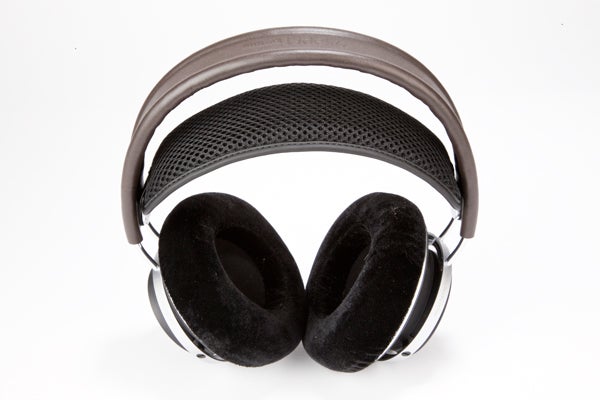
Open-back headphones can sound a little too laid-back, which might be thought-of as dull. However, the taut and punchy low-end here is much closer to what you might expect from a closed-back pair. It’s also in better proportion with the rest of the sound when compared to the other Fidelio models, the Philips Fidelio L1 and Philips Fidelio M1. If anything we’re surprised that Philips has managed to pull the Fidelio X1 out of the bag for so just £30-40 more than the L1.
Some of the characteristics of the series remain, though, and they may not please everyone. These are quite warm headphones within their category, with the low-end skew reaching up a little further than just the lowest frequencies. This leads to lesser sense of separation than something like AKG Q701, which are now available for around the same price. They are smooth and detailed, but Philips’s main focus seems to be on making the Fidelio X1 enjoyable, rather than perfectly balanced or fiercely insightful.
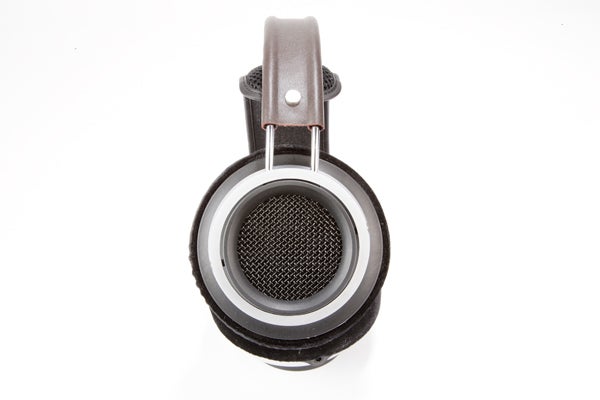
There are times when the low-end gets close to being a little too big as well, especially compared directly to some of its £200-300 peers. These aren’t quite the ultimate in audio from every respect, perhaps, but they are an absolute delight if you’re after high-end sound that doesn’t trade in all of its low-end thrills for definition and composure.
Philips Fidelio X1 Verdict
The Philips Fidelio X1 are among the best-looking, most comfortable open headphones you can get. They’re made from top-quality materials and the cable is as easy to switch as cables get. Sound quality is excellent too, although they’re best-suited to those who think that some expensive headphones trade in too much bass for the sake of sounding high-end.
Trusted Score
Score in detail
-
Value 8
-
Design & Features 10
-
Sound Quality 8


